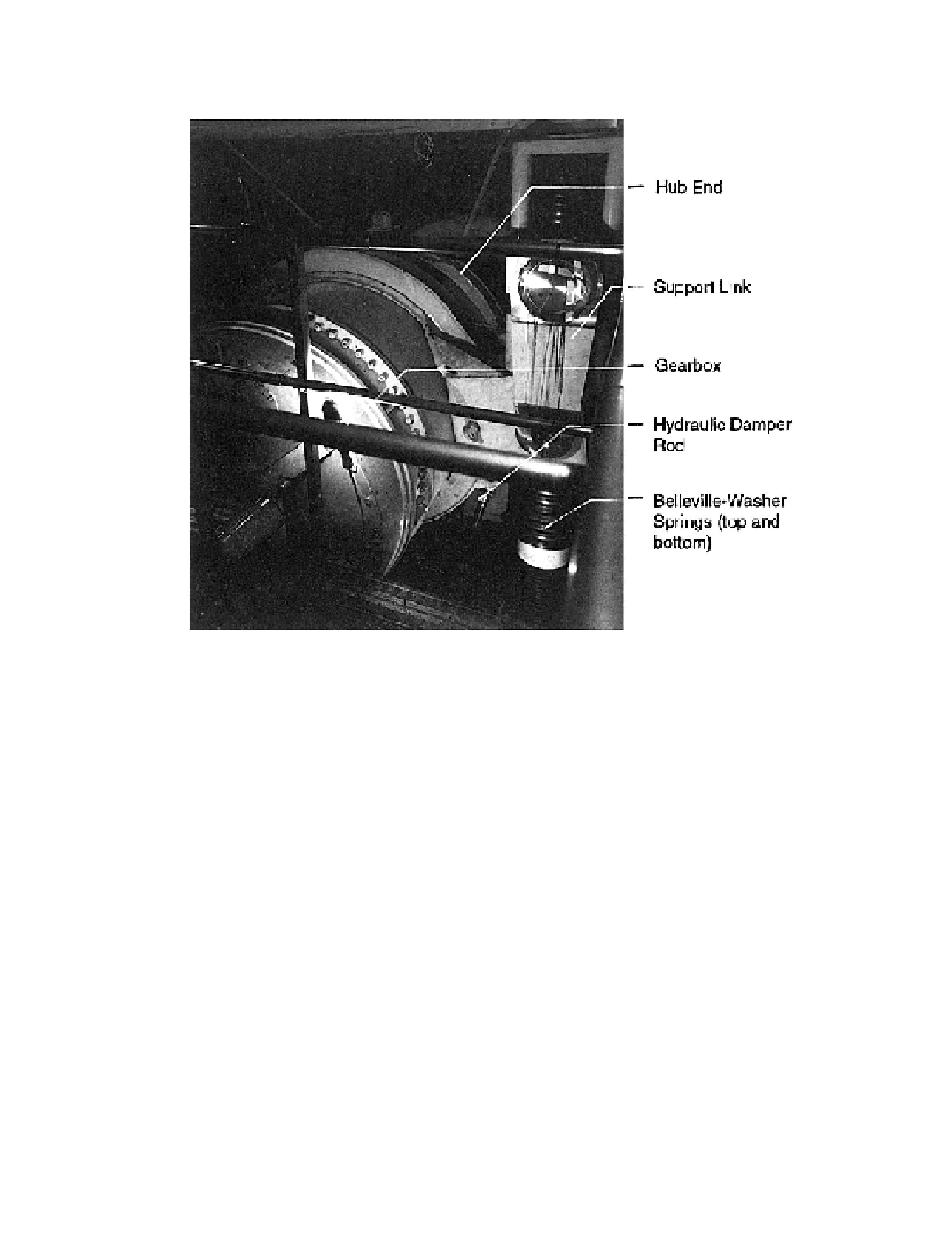Environmental Engineering Reference
In-Depth Information
Figure 10-3. Torsional springs and dash pots in the power train of the WTS-4 HAWT
provide compliance and damping.
(
Courtesy of Medicine Bow Energy, Inc.
)
the nacelle oscillate as a flexural or torsional pendulum on the structural spring of the
tower, above the blade passage frequency. Arising from a fear of large resonant responses
while crossing a tower natural frequency, this approach was supported by the fact that the
first hingeless design of the experimental Mod-0 HAWT (Fig. 3-10) experienced resonant
2
P
torsional oscillations of the nacelle/yaw drive/tower structure, forced by the passage of
the two rotor blades through the tower shadow. Blade passage frequency still serves to
define the lower bound on the natural frequencies of a stiff structural system, with the
exception of the power train.
In two-bladed HAWTs, adoption of the teeter hinge has eliminated the large 2
P
moment loads formerly transmitted from the rotor to the nacelle. This has enabled the
lowest tower modal frequency to be reduced, not only below the blade passage frequency,
but also below the rotor speed itself. The latter case is often called a
soft-soft system.
Designing a soft-soft tower becomes primarily a matter of supplying adequate bending
strength, letting the stiffness fall as low as it will. In larger turbines this results in huge
weight and cost savings. A very successful example of a soft-soft tower design is the
WTS-4 HAWT, in which the first tower bending modal frequency is in the vicinity of 0.5
P
.

Search WWH ::

Custom Search